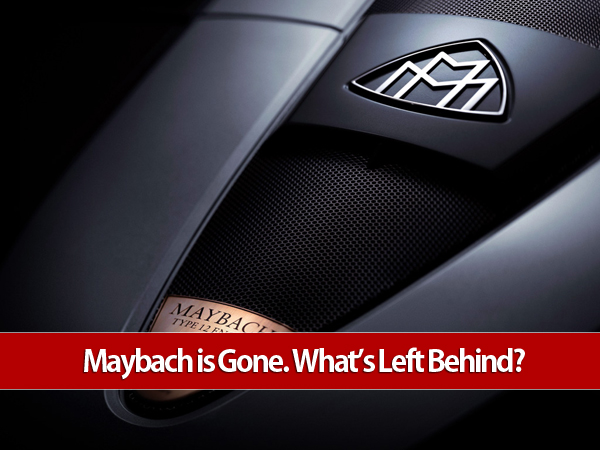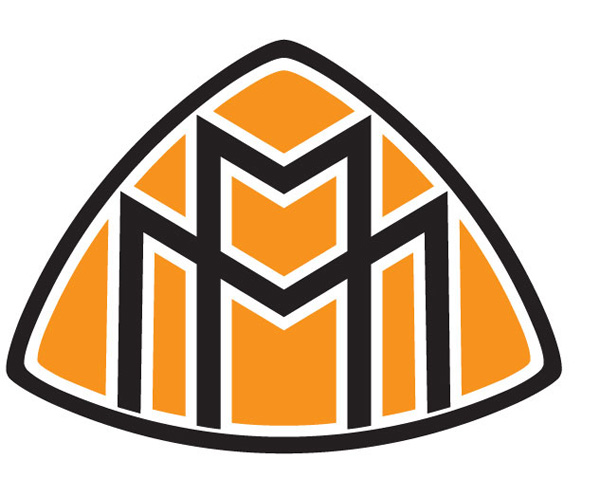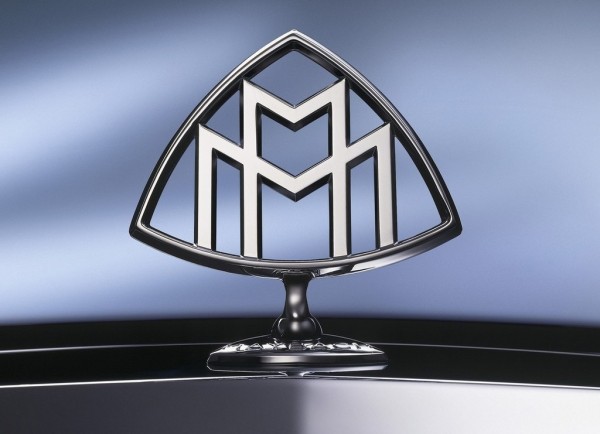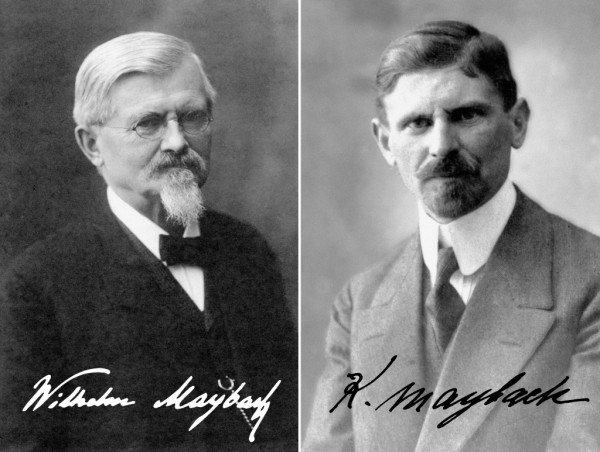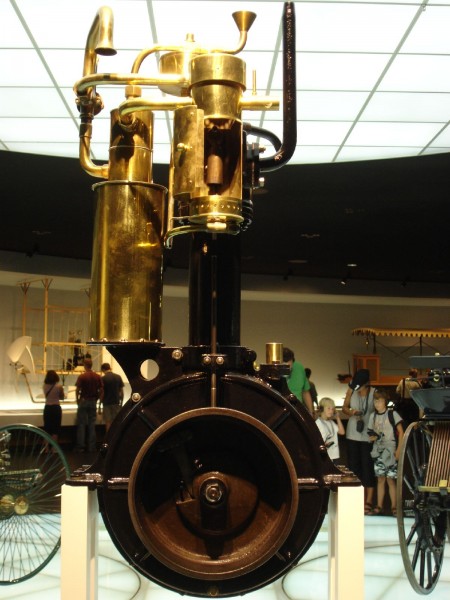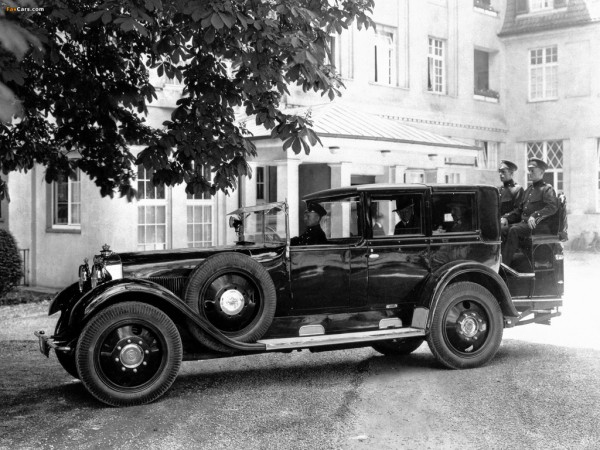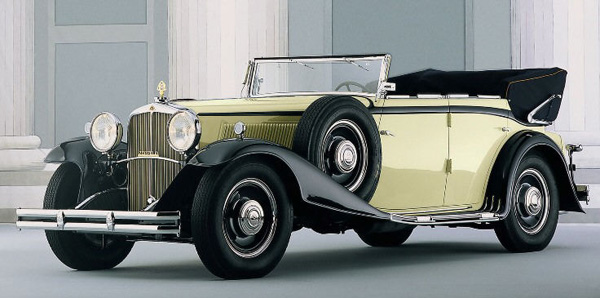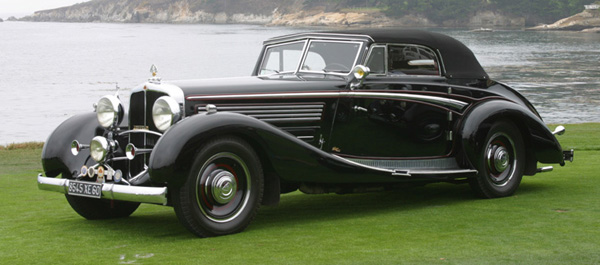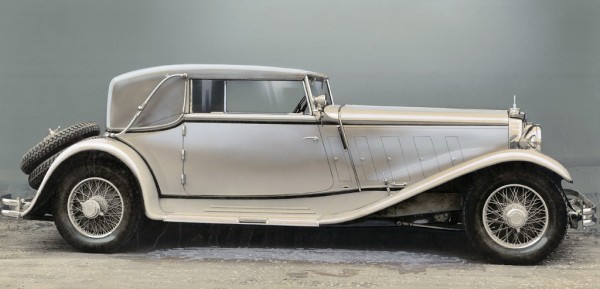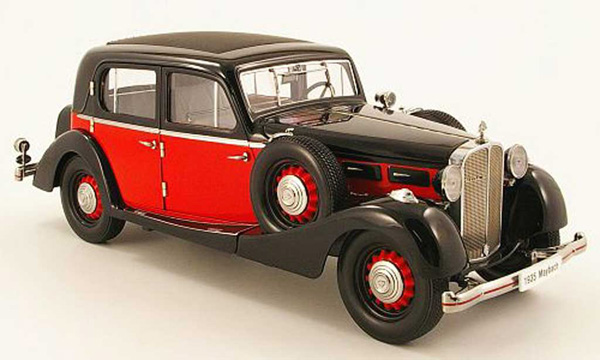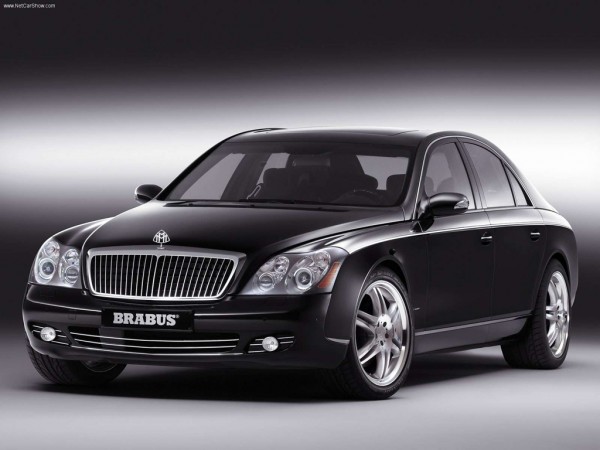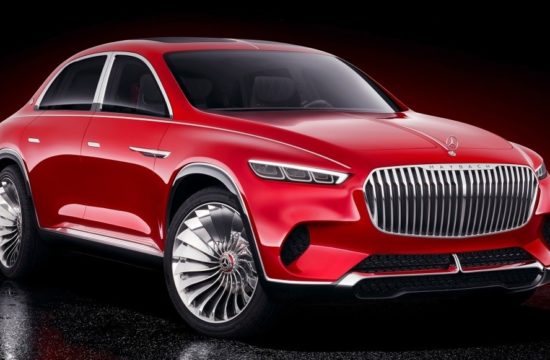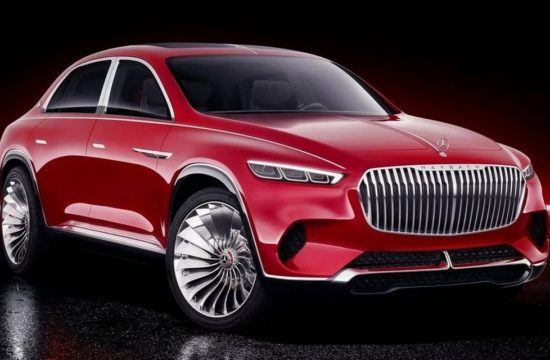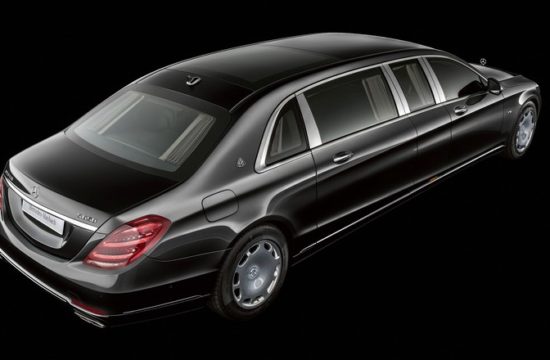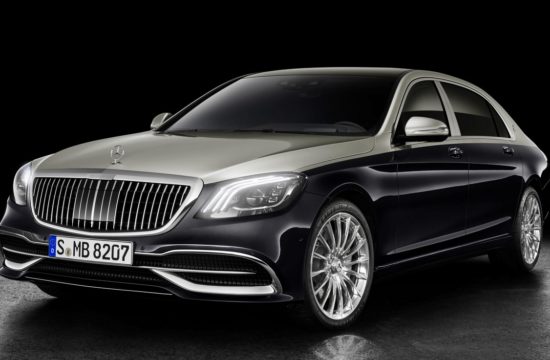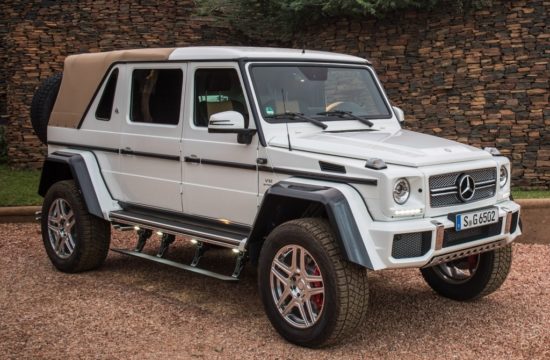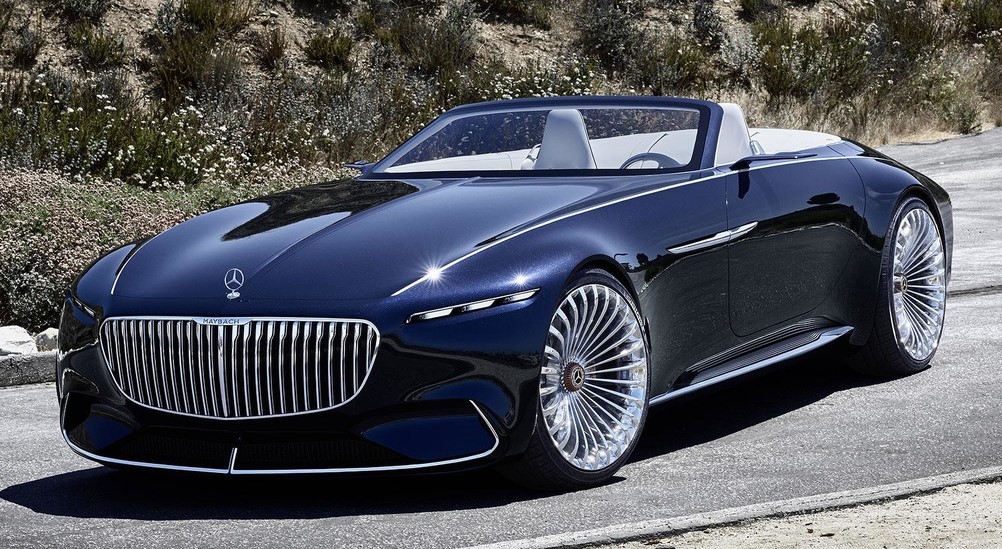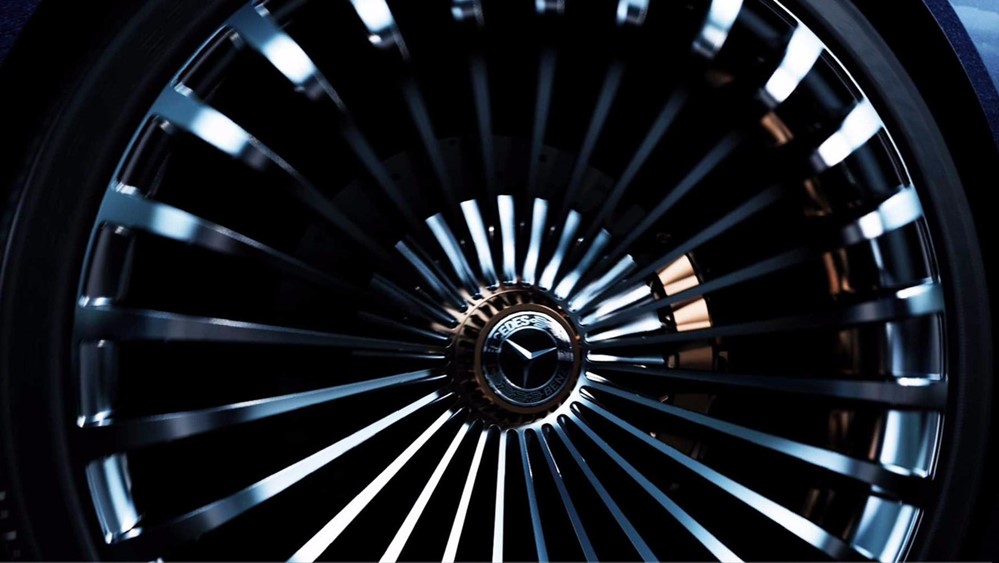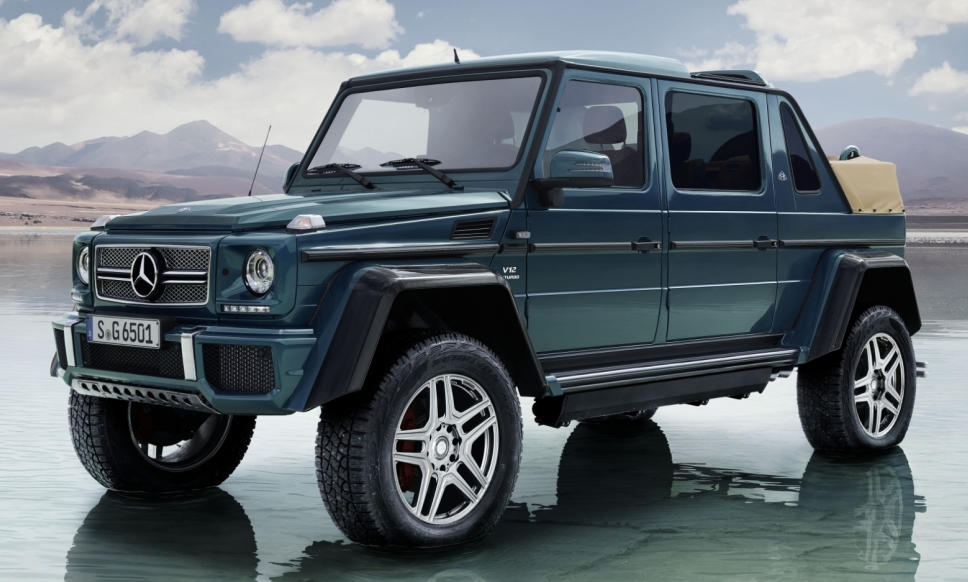Back in November 2011, Daimler’s CEO Dieter Zetsche took a drastic decision and announced that the Maybach brand will be shut down starting with 2013. This decision was harsh, but necessary for Daimler, since Maybach didn’t manage to rise up to its rivals’ level and was a financial black hole for the German giant.
Looking at the numbers, things are catastrophic: in 2010, Maybach sold only 157 units and less than 50 units in 2011. These numbers are pretty far from what Daimler had in mind in 1997 when they decided to revive the brand created by Wilhelm Maybach.
Some might say this was caused, in part, by the financial crisis, but this doesn’t really stick if we look at how Maybach’s competitors did in the same time frame: for example, Rolls-Royce sold 2,711 cars in 2010, a record for the British brand owned by BMW, while Bentley sold 4,763 units. But Maybach couldn’t find its place in the ultra-luxurious automobiles world. On a market where the number of customers with endless possibilities constantly grew, the German brand failed to impress.
But before we see why an ambitious project like Maybach backed by a giant like Daimler turned into a failure, let’s take a look back and see Maybach’s heritage and how this company evolved throughout history.
Maybach’s history
Despite its sad ending, Daimler’s former luxury brand has an important history behind it. It was founded in 1909 by Wilhelm Maybach and his son, Karl. Maybach has always been close to Gottlieb Daimler and he was always considered to be one of the best designers for engines and systems for the first automobiles.
He was born on February 9, 1846, in Heilbronn, a city near Stuttgart in the Baden-Wurttemberg state, Germany. He had four brothers and lost both his parents when he was just 13 (his mother died when he was ten, his father three years later). With some assistance from his relative, Maybach was accepted into the Reutlinger Bruderhaus, a philanthropic institution in Reutlingen. This part of his life is extremely important for two reasons. First one is that the institution’s founder and director, Gustav Werner, noticed young Wilhelm’s technical skills and encouraged him to follow his passion by sending him to the school’s engineering workshop. Second is that here is where Wilhelm met Gottlieb Daimler, who was the workshop’s manager. Impressed by Maybach’s abilities, Daimler took him as his assistant, in 1865, starting their life-long collaboration, one of the most famous and productive in the automobile industry.
For Daimler, Maybach remained one of his closest friends and associates until his death, in 1900, having worked together in countless projects. In September 1869, they worked together in Karlshrue at Maschinenbay-Gesellschaft, a locomotive and railway wagon manufacturer. Later Daimler moved to Deutz, an engine manufacturer based in Koln, Germany, where he took Daimler with his as his chief designer. This was a time when Maybach started working on light, high-revs, internal combustion engines which were used for ground transport, ships or airplanes. Also, 1879 was the year his first son, Karl, was born, who will later play an important role in continuing his father’s work.
Following some strong disagreements with the management (mainly with the owner, Nikolaus Otto, the inventor of the four-strike engine), Daimler left Deutz Gasmotoren Fabrik in 1882 and set up an independent workshop on the Taubenheimstrasse in Stuttgart. Soon, in Octomber 1882, Maybach followed and continued his work on light engines he started while at Deutz.
In 1883, Maybach built the first horizontal engine, followed by what it is known today as the “Grandfather Clock” engine, widely considered the predecessor of the modern internal combustion engine. The engine was lighter than conventional ones, it had only one cylinder, a revolutionary hot tube ignition and was specially designed to be installed on small vehicles. In November 1885, the engine was first installed on a wooden bicycle (thus the world’s first motorcycle was born) and in March 1886 it was used on a stagecoach. The motorcycle was driven by Maybach for about 2 miles at a top speed of 7.5 mph, while the motorized stagecoach reached a top speed of 10 mph. Funny thing is that people living around the workshop didn’t know what exactly happened around there and, alarmed by all the metal sounds, used to call the police all the time, thinking the two were involved in counterfeiting.
Even though their inventions were admired by everyone, Daimler wasn’t satisfied with just building engines for stagecoaches, so Maybach started working on an automobile with steel wheels. The final product was unveiled in 1889 in Paris and it was the first time a four speed transmission was used. This engine and Maybach are considered extremely important in the development of France’s early automobile industry.
Daimler and Maybach together founded the Daimler Motoren Gesellschaft company in 1890 but troubled times followed. Maybach left a year later after some disagreements with a few members of the board, founding his independent workshop. Daimler also left, in 1893, but both came back in 1894 at the request of Frederick Simms, a British businessman who got involved with Daimler. Still, during these years, Maybach’s contribution to the automobile industry was huge, with inventions such as a new tubular radiator with fan and the honeycomb radiator.
Following Daimler’s death in 1900, Maybach kept building engines, but also started building cars. His first one was commissioned by a wealthy Austrian (who was a successful dealer and racing driver) and its engine was named Daimler-Mercedes, in honor of Daimler and of Mercedes, the dealer’s ten year old daughter. The car is now known as the Mercedes 35 hp (the first time the Mercedes name was used) and was extremely successful in racing, which also led to an important commercial success.
But Maybach again went into conflict with DMG’s management and left the company in 1907. Two years later, he founded the Luftfahrzeug Motoren GmbH, with his son Karl as manager. Back then, Maybach’s main business partner was Count Ferdinand von Zeppelin and the company mainly built airship engines. In 1912, it was renamed to Maybach Motorenbau GmbH and business was very good since World War I started (they sold more than 2,000 aircraft engines in that period).
However, after the war ended, demand for aircraft engines dropped and Maybach started working more on building his own automobiles. What’s interesting is that neither Maybach nor his son ever owned one of the cars they built. Actually, Maybach never owned a car in his life. Which life ended on December 29, 1929, at the age of 83.
The first car to come out of the Maybach workshop was the Maybach W1, built by Maybach’s son, Karl, as a test unit, based on a BMW chassis. This happened in 1919.
Maybach W3
The first fully functional automobile in the brand’s history will be the Maybach W3, launched in 1921 at the Berlin Motor Show, starting the glory days for Maybach. Built between 1921 and 1928, the W3 was powered by a six cylinder engine with a 5.7-liter displacement that produced 70 hp (51.5 kW). The rear-wheel drive car had four doors and despite its weight of more than two tons, it was able to reach 68 mph (almost 110 km/h) at a fuel consumption of 18-20 liters per 100 km.
During the seven year production run, 305 units were built, with two versions available, open and closed body. As you can see, there’s a W2 missing in between. This one has an interesting story, because in the beginning, the W2 was a line of 5.2-liter engines developed for Dutch car manufacturer Spyker. However, not all were sold and Karl Maybach decided to use these engines for Maybach cars, to save some of the costs.
Maybach W5
The Maybach W5 was actually a more powerful version of the W3. The engine displacement was increased from 5.7 to 7.0 liters for an impressive power boost of 50 hp. That meant that the new 120 hp (89 kW) W5 was able to reach a higher top speed, 80 mph. Other than that, it wasn’t too different from the W3. It was also available with an open or a closed body and was built between 1926 and 1928.
Towards the end of the production run, in 1928, an “SG” version was launched (which stands for “speed gear”) that had an improved overdrive transmission installed. This type of transmission allowed the car to go faster than 80 mph and the special gear was activated through a lever, without any clutch action involved.
The total production run was of around 250 units and one of these, a Maybach W5 SG Pullman limousine from 1926 is the oldest surviving Maybach. The car belonged to Dr. Vogler, the personal physician of famous tenor Enrico Caruso, has been restored in the ‘80s and is now on display at the Auto & Technik Museum in Sinsheim, Germany.
Maybach 12
The Maybach 12’s production run was extremely short, from 1929 to mid-1930, with 200 units built in this period. The twelve cylinder model replaced the Maybach W5 SG and it was considered one of the best cars of its times. The 7.0-liter V12 was producing 150 hp and coupled with an advanced three speed transmission with overdrive was able to take the car up to a top speed of more than 90 mph.
Despite the car’s large size, Karl Maybach paid a lot of attention to reducing the engine’s weight as much as possible, so the car’s final power to weight ratio was extremely good for that age. Actually, it would take a while before any other cars would achieve anything similar. Also, many experts claim that this engine is the predecessor of a famous modern engine, the 6.0-liter V12 used by recent AMG models.
As for the design, the Maybach 12 was getting pretty similar to cars from the newly formed Mercedes-Benz brand and that was because Karl started working for them. However, this model only prepared the world for what was about to come, the…
Maybach DS7/DS8 “Zeppelin”
Launched in 1929, the Maybach “Zeppelin” was the small car manufacturer’s flagship. The first generation was the DS7, whose name stood for “Doppel Sechs” (Double Six) reffering to the V12 engine. The 7.0-liter unit delivered 150 hp, quite similar to the one on the Maybach 12, making many experts call the Zeppelin just a re-branded version. But there was more to it. The DS7 featured a four speed sequential transmission, was able to go as fast as 93 mph and used enlarged four bolt main bearing caps, plus camshaft gears made from new material called Novotex which significantly reduced noise.
The “Zeppelin”, or the DS7 by its official name, was an impressive automobile in those days. Besides the incredible powerful engine, it was also huge. At a gross weight of around 6,600 lbs it required for drivers in Germany to have a goods vehicle license to be able to drive it.
A year after the DS7 debuted, a new version was introduced, the DS8. As you can probably guess, engine displacement was increased to 8.0-liters, providing a significant power boost of 50 hp. With the total power output at 200 hp mated to the five speed manual transmission, the DS8 became one of the most powerful cars of the time. Also available as an open top and closed body, the lighter versions were able to go as fast as 106 mph.
The Maybach DS7 was in production until 1931, while the last DS8 was built in 1939.
Maybach W6
Creating such technical marvels was extremely beneficial to Maybach’s image, but it soon became an issue, because such advanced cars were also very expensive. And since Europe wasn’t going through its brightest economic period, slow sales forced Maybach to look for alternatives to sell more cars.
And this is how he came up with the idea for the Maybach W6. In order to make it more price attractive, he used the existing production facilities where the W5 was built, used the same SG engines and put them on the newly developed DS “Zeppelin” chassis. However, even though the car was still able to go 75-80 mph, the new model’s dynamics were heavily influenced by the large weight. What Maybach hoped to achieve with the W6 was to create the image of a more affordable “Zeppelin”, which was almost everyone’s dream car back then.
But the W6 wasn’t a success and sales failed to rise to Maybach’s expectations. In 1934, the W6 DSG was introduced, which featured a newly designed twin overdrive transmission system that was supposed to improve the way the car handled. But sales didn’t improve significantly and the W6 production was ended in 1936.
Maybach DSH
Introduced in 1930, the Maybach DSH wanted to cash in some of the huge attention Maybach was getting after launching the “Zeppelin”. The thinking behind its name is quite strange: it stands for “Double Six Half” (it had six cylinders) and wanted to show the car’s mutual DNA with its larger brother. The DSH was powered by a newly developed 5.2-liter engine and was another attempt to create a more affordable car. Total power output was 130 hp and using the four speed sequential transmission it was able to reach a top speed of 87 mph (140 km/h).
The convertible was very similar to the Mercedes-Benz Nurburg Cabriolet, but for some reason, the Maybachs were more popular. Not too popular though, because the total number of units sold (both closed body and open top) was 100, between 1930 and 1937.
Maybach SW35, 38, 42
It seems that creating a truly affordable car that would sell has always been a challenge for Karl Maybach. After failing to achieve commercial success with the W6 and the DSH, Maybach launched the SW 35 (Schwingachs Wagen) in 1935.
With development started from scratch, the new SW 35 was unveiled for the first time at the 1935 Berlin Motor Show and it impressed everyone with its outstanding coachwork and level of luxury. The 3.5-liter six cylinder engine (hence the name) produced 140 hp at 4,500 rpm and was able to take the car to a top speed of 85-100 mph, depending on the body type.
An upgraded version was launched in 1936, the Maybach SW38, whose engine displacement was increased to 3.8-liters. Despite that, power output was the same, 140 hp.
The final version of the SW was the SW 42, produced between 1939 and 1941. Despite also having its engine displacement increased (to 4.2-liters), the car offered the same power output as his predecessors, 140 hp. What the SW 42 did bring new was an incredible level of luxury. Extremely expensive and refined materials were used and the car was available in a lot of body versions (especially the long wheelbase model). 850 units were sold, so it was really successful compared to other models.
Due to the World War II getting more serious, car production was ceased in 1941. Since the first Maybach was built, 1,750 cars were produced in sold in the Maybach factory. After the war ends, Karl Maybach starts rebuilding the factory in Friedrichshafen. Six years later, during which he kept designing engine, he starts working on a new Maybach car, but is forced to abandon the project due to lack of funds. One year later he retires from the company and dies on February 6, 1960, leaving behind an amazing motor heritage.
The same year, Maybach Motorenbau GmbH is bought by Daimler and used to create special editions of the Mercedes-Benz W108 and W116.
In the second half of the ‘90s, Daimler seriously started thinking about building a competitor for ultra-luxury car manufacturers such as Rolls-Royce or Bentley, which were owned by two of its main rivals, BMW and Volkswagen. And all eyes turned to Maybach. The 1997 Tokyo Motor Show marked the debut of a new luxury concept car, which will go into production as the Maybach 57 and the Maybach 62 (the numbers referred to the models’ length). The first unit was sold in 2002 and several version were available during the production run: long wheelbase (57S and 62S), Zeppelin and Landaulet. The special edition 62 Landaulet is the most expensive Maybach ever sold, with a list price of more than $1.2 million.
Maybachs were also modified by Mercedes’ traditional tuning company, Brabus. The Maybach Brabus was unveiled in 2004 and it was powered by a twin-turbo 6.3-liter V12 that produced 640 hp and 757 lb-ft of torque. According to official specs, it was able to sprint from 0 to 62 mph in 4.9 seconds and reach an electronically limited top speed of 190 mph. However, the high-performance Maybach never went into production.
But what went wrong with Maybach?
Why didn’t it succeed in the ultra-luxury market? First of all, Maybach was coming with a car built on an older S Class’ platform. People did not like that and were not willing to pay $400,000 for a rebadged S Class with several luxury features. Another reason was that the brand never got the attention it deserved. During its production run of 10 years, no new technology has been introduced on the Maybach. You will see it first on the S Class, or the A Class, or any other class, but not Maybach. And that’s why the public probably never saw Maybach as Daimler’s true flagship, like it was supposed to be.
All these, combined with Daimler’s failed attempt to start a partnership with Aston Martin to build a new Maybach generation led to Dieter Zetsche’s sad announcement. And on December 17, 2002, the last Maybach was produced at the Sindelfingen plant, after only 3,000 units were built in total, a lot less than what Daimler expected.
So what will happen next? Sadly, it looks like this is the end of Maybach and unless some miracle happens in the future, we’ll never see a “Maybach” badged car ever hitting the streets again, because Daimler announced the name will not be used anymore. It’s sad to see a brand whose name is connected to some people that important to the car industry simply go away, but unfortunately that’s how life and business are. As for the ultra-luxury market segment, Daimler announced that the upcoming S Class will take over this task from Maybach. To do that, the new Mercedes flagship is announced as being more luxurious than ever and will be offered in three wheelbase versions, including an S600 Pullman.

